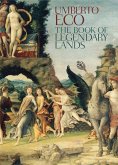The book as object, as content, as idea, as interface.
What is the book in a digital age? Is it a physical object containing pages encased in covers? Is it a portable device that gives us access to entire libraries? The codex, the book as bound paper sheets, emerged around 150 CE. It was preceded by clay tablets and papyrus scrolls. Are those books? In this volume in the MIT Press Essential Knowledge series, Amaranth Borsuk considers the history of the book, the future of the book, and the idea of the book. Tracing the interrelationship of form and content in the book's development, she bridges book history, book arts, and electronic literature to expand our definition of an object we thought we knew intimately.
Contrary to the many reports of its death (which has been blamed at various times on newspapers, television, and e-readers), the book is alive. Despite nostalgic paeans to the codex and its printed pages, Borsuk reminds us, the term book commonly refers to both medium and content. And the medium has proved to be malleable. Rather than pinning our notion of the book to a single form, Borsuk argues, we should remember its long history of transformation. Considering the book as object, content, idea, and interface, she shows that the physical form of the book has always been the site of experimentation and play. Rather than creating a false dichotomy between print and digital media, we should appreciate their continuities.
What is the book in a digital age? Is it a physical object containing pages encased in covers? Is it a portable device that gives us access to entire libraries? The codex, the book as bound paper sheets, emerged around 150 CE. It was preceded by clay tablets and papyrus scrolls. Are those books? In this volume in the MIT Press Essential Knowledge series, Amaranth Borsuk considers the history of the book, the future of the book, and the idea of the book. Tracing the interrelationship of form and content in the book's development, she bridges book history, book arts, and electronic literature to expand our definition of an object we thought we knew intimately.
Contrary to the many reports of its death (which has been blamed at various times on newspapers, television, and e-readers), the book is alive. Despite nostalgic paeans to the codex and its printed pages, Borsuk reminds us, the term book commonly refers to both medium and content. And the medium has proved to be malleable. Rather than pinning our notion of the book to a single form, Borsuk argues, we should remember its long history of transformation. Considering the book as object, content, idea, and interface, she shows that the physical form of the book has always been the site of experimentation and play. Rather than creating a false dichotomy between print and digital media, we should appreciate their continuities.
What distinguishes Borsuk's book are her perspective as an artist and the book's breadth and depth despite its brevity. Books on Books, 06.07.2018
The Book will... serve as an excellent introductory textbook for courses on book art or the history of the book. And by virtue of its style and artist's perspective, Borsuk's book will appeal to anyone with even a passing interest in this essential technology of civilization and its growing role as a material and focus of art in the twentieth and twenty-first centuries.
Books on Books
Borsuk, who combines the expertise and sensibility of a scholar and a book artist, has written a book that provides the reader with a both technically precise and perfectly readable synthesis of our current knowledge on the book, while organizing and structuring this information from a specific point of view that helps find answers to the countless changes of the book in the digital era.
Leonardo
Progressing through The Book and the adoption of the codex, one follows the evolving display of printed language and envisions the pedigree of our own pages. This is essential knowledge....Borsuk's fluid prose finds its matched form.
Ron Slate, On the Seawall
This is an easy, enjoyable account, the latest in the MIT Essential Knowledge series, which condenses hot topics into pocket-sized volumes.
Times Literary Supplement
The Book will... serve as an excellent introductory textbook for courses on book art or the history of the book. And by virtue of its style and artist's perspective, Borsuk's book will appeal to anyone with even a passing interest in this essential technology of civilization and its growing role as a material and focus of art in the twentieth and twenty-first centuries.
Books on Books
Borsuk, who combines the expertise and sensibility of a scholar and a book artist, has written a book that provides the reader with a both technically precise and perfectly readable synthesis of our current knowledge on the book, while organizing and structuring this information from a specific point of view that helps find answers to the countless changes of the book in the digital era.
Leonardo
Progressing through The Book and the adoption of the codex, one follows the evolving display of printed language and envisions the pedigree of our own pages. This is essential knowledge....Borsuk's fluid prose finds its matched form.
Ron Slate, On the Seawall
This is an easy, enjoyable account, the latest in the MIT Essential Knowledge series, which condenses hot topics into pocket-sized volumes.
Times Literary Supplement








